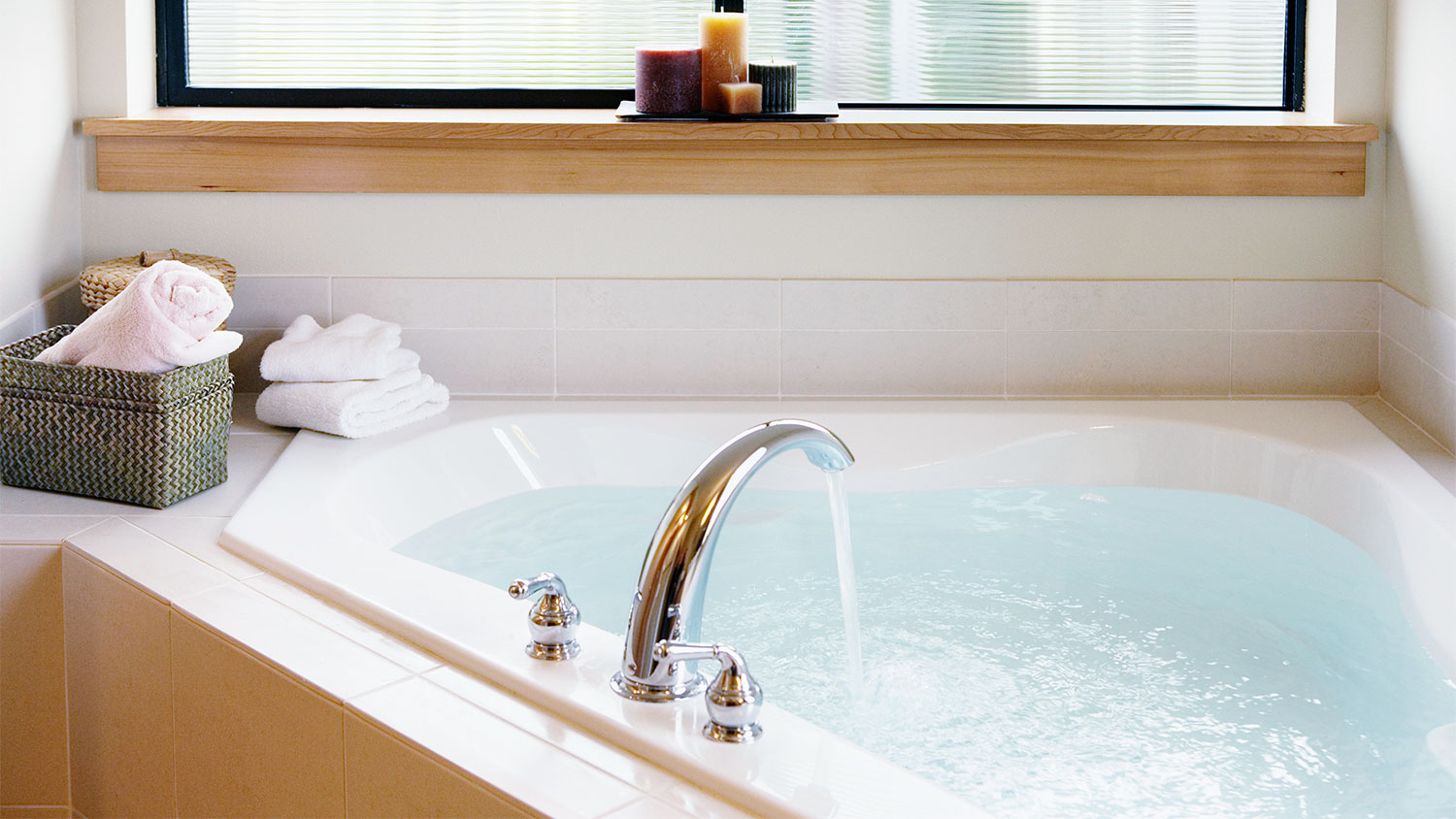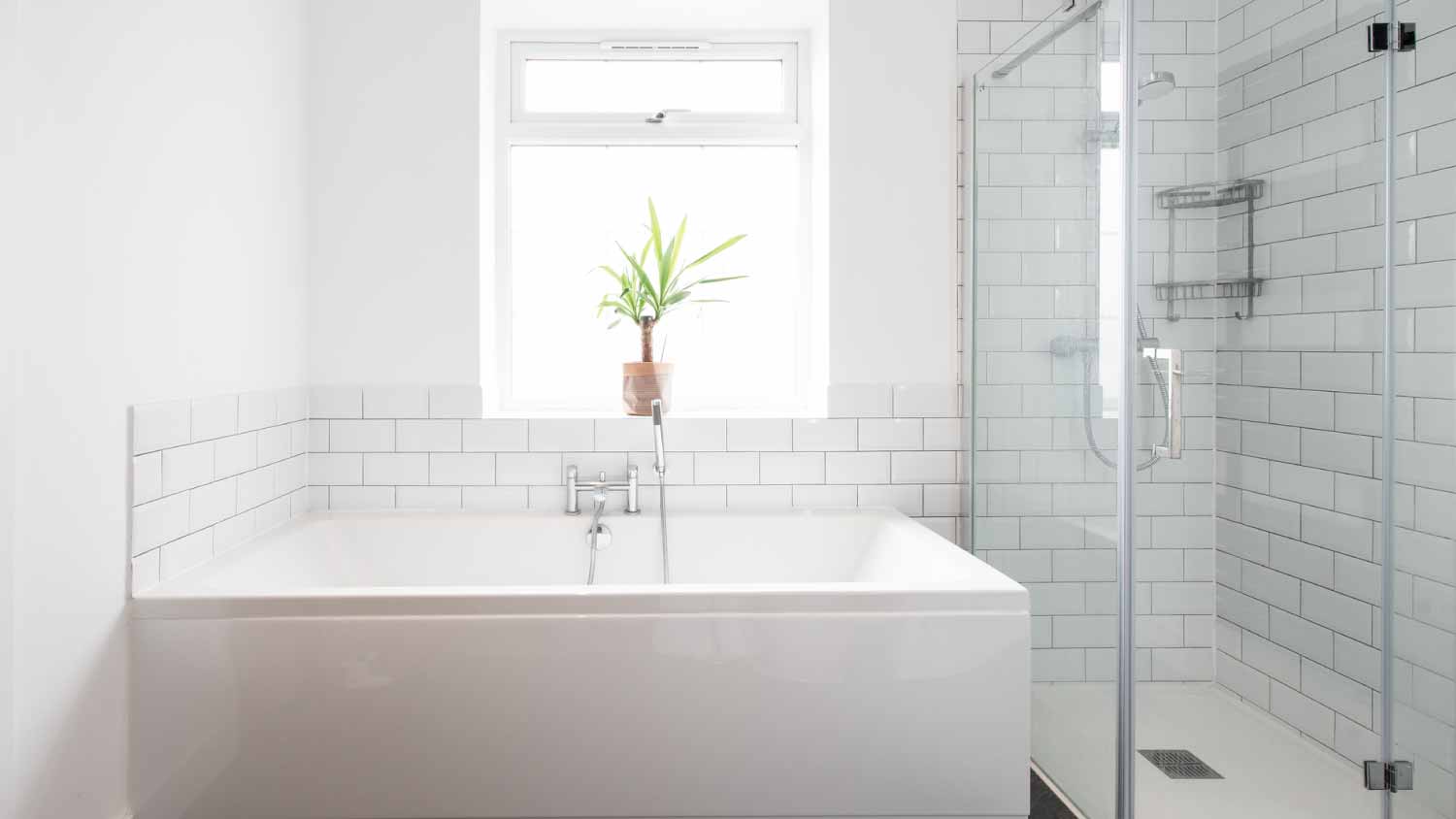
Various factors affect the total tub-to-shower conversion cost, including the size of the area, type of shower, materials, and labor fees.
Take the high road and go low


Low flow showerheads should use less than 2.5 gallons of water per minute
The average showerhead costs $50 to $100
You can purchase a basic low-flow showerhead for less than $20
Aeration technology can help increase water pressure
Luxury showerheads have features like LED lights, Bluetooth speakers, and flow control
Low water pressure is no longer a prerequisite of low-flow showerheads. Modern showerheads use aeration, compact designs, and different spray patterns to boost water pressure and give you a luxury shower experience. Should you make the switch?
According to the EPA, the average family uses 40 gallons of water to shower every single day. A low-flow showerhead doesn’t just cut your water usage and carbon footprint, it slashes your utility bills. It can help the average family save around 2,700 gallons of water a year and enough energy to power their house for 11 days.
From stationary to handheld to luxury custom systems, there’s a lot to consider when choosing the best showerhead. These tips can help you keep your budget, lifestyle, and features in mind.
There are low-flow showerheads for every price range, but most cost between $50 and $100. You can get a basic low-flow showerhead for less than $20, but a luxury showerhead could cost more than $1,000.
Also factor labor into your shower hardware budget. Sometimes, replacing a showerhead is as easy as screwing off the existing fixture and screwing in a new one. Other times, it will require more extensive work like installing a slide bar or a second showerhead. In that case, you’ll probably want to hire a plumber, which will typically cost around $250.
Since the Energy Policy Act of 1992, showerheads in the United States are limited to using 2.5 gallons per minute. Any showerhead that uses less than that is considered “low-flow,” and some states have stricter requirements. For example:
Showerheads can’t exceed 1.8 GPM in California, Hawaii, and Washington
Showerheads can’t exceed 2.0 GPM in New York, Colorado, and Vermont
Today, most water-efficient models fall between 2.0 and 1.5 GPM. Some even go as low as 0.5 GPM and let you adjust the flow to your preference. The lower the GPM, the more water and energy savings—but you may need to look for additional features to boost water pressure.
Water-efficient showerheads with the WaterSense label use no more than 2.0 GPM, but give a shower experience equivalent to (or better than) conventional showerheads. In other words, low flow doesn’t mean you have to shower in what feels like a dribble. Some flows are actually quite robust.

There are many different types of showerheads on the market. The one you choose should suit your lifestyle, budget, and your existing bathroom features.
Stationary (or fixed) showerheads are the least expensive option. This is your standard showerhead that’s affixed to your shower wall, though some models let you adjust the angel of the flow. Stationary showerheads typically cost between $5 and $50. They’re bare-bones, but they work.
Handheld showerheads typically cost between $30 to $200. They detach from the wall using a long arm, making them ideal for people who have limited mobility or take seated showers. They’re also beneficial for people who need to bathe wiggly pets and children.
Dual showerheads range from $100 to $1,000. This type of shower system includes two heads that are controlled by a lever. It lets you mix and match what type of showerhead you want to use. For example, you can switch between a rain showerhead or a regular stationary showerhead.
Slide bar showerheads are attached to a sliding bar that lets you adjust the height. These typically run from $60 to $300 and are ideal for families of varying heights and ages or people who don’t want to get their hair wet in the shower.
Rain showerheads, which typically cost between $25 and $100, are a trendy option that makes a bathroom feel more luxurious—like you’re taking a shower in a rainstorm. Unfortunately, these are notorious for low pressure, so choosing a rain showerhead is a trade-off for some.
Most modern low-flow heads use aerating or laminar technology to produce a stream as powerful as a conventional showerhead.
Aerating showerheads inject air into smaller streams of water to increase water pressure. These heads provide a strong, robust stream, though some people may find the high-pressure stream sharp. Aerating showerheads also create more steam, so they work best in well-ventilated spaces.
Laminar showerheads distribute water into larger streams (think: a rain showerhead) rather than using air. This system disperses a gentler stream than aerating showerheads you can adjust to your preferences. Laminar heads produce less steam, so they’re ideal for bathrooms that lack ventilation.
In recent years, shower technology has doubled down on luxury, with features that prove conservation doesn’t have to feel like a sacrifice. Consider adding these lavish extras when choosing the best low-flow showerhead for your bathroom:
LED lights
Massage sprays
Misting settings
Bluetooth speakers
Temperature control
Massage sprays
Some luxury showerheads have electronic control panels that let you adjust everything from spray intensity to pattern. The right features can make even the tiniest bathroom feel like a spa. Just remember to clean your showerhead regularly to maintain peak performance.
From average costs to expert advice, get all the answers you need to get your job done.

Various factors affect the total tub-to-shower conversion cost, including the size of the area, type of shower, materials, and labor fees.

Your faucet plays a major role in your kitchen's overall design and functionality. Learn how much it costs to install a kitchen faucet based on brand, type, and city.

Curious how much a shower remodel costs? From new fixtures to full installations, we have the prices you need to know to establish a shower remodel budget.

An updated bathtub can give a bathroom a whole new look. Find out how much it costs to replace a bathtub in Charlotte, NC, including prices by type and labor costs.

Replacing or installing an attic ladder provides a safe way to access your attic. Learn what factors affect attic ladder installation cost to help you budget.

An updated bathtub can give a bathroom a whole new look. Find out how much it costs to replace a bathtub in Austin, TX, including prices by type and labor costs.